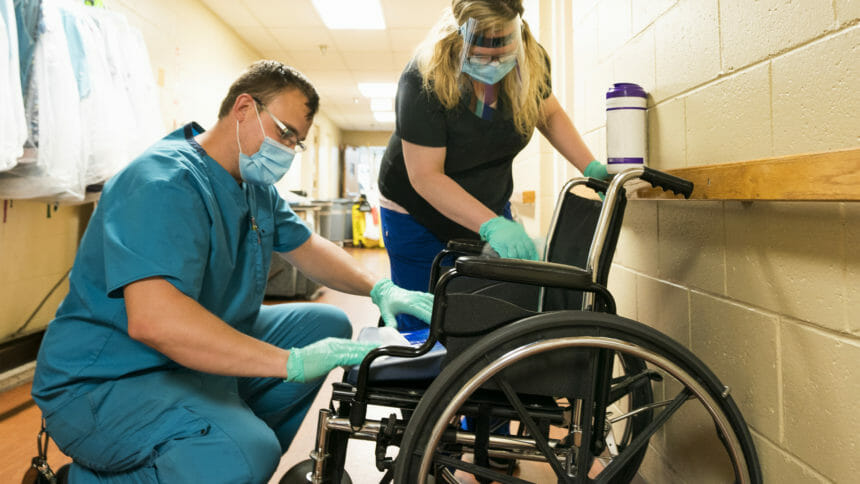
A new federal report calls into question whether Medicare’s required hours for registered and licensed practical nurses in nursing homes are adequate in helping protect nursing home residents from infections.
The US Department of Health and Human Services’ inspector general’s latest look at nursing homes found that more than 1,000 facilities saw infection rates of 75% or more in 2020. But facilities with “extremely high infection rates” faced those issues despite reporting RN and LPN nursing hours at or above Medicare’s requirements for both the first and second surges of the virus, the report stated.
During the first COVID surge from April through May, three-quarters of Medicare patients in the 542 nursing homes that reported extremely high infection rates had the virus or likely had the virus.
“These first months made clear that nursing home residents were particularly vulnerable,” the report noted. Six months after that initial surge, another 817 nursing homes saw extremely high infection rates.
Other findings in the report include:
- For-profit facilities accounted for 77% of the facilities with extremely high infection rates during both surges.
- 6% of the nonprofit nursing homes owned by government entities accounted for 4% and 5%, respectively, of the nonprofit nursing homes with high infection rates in the first and second phases.
- Urban facilities were almost twice as likely as those in rural areas to see extremely high infections in the first surge, but that flipped during the second surge. Similarly, large facilities were harder hit with high infections in the first surge while smaller nursing homes had higher infection rates in the second surge.
Surveys miss infection control deficiencies
Notably, health surveyors did not note deficiencies in infection control in 54% of the nursing homes that reported extremely high infection rates. Just 17% of the facilities with the high infection rates were cited for “serious infection control deficiency.
Buffy Lloyd-Krejci, PhD, an expert in infection prevention and control in nursing homes, told McKnight’s Long-Term Care News that the survey process might have worsened the situation inside facilities since staff would have to halt care to respond to a survey.
“The sector is wounded and crippled,” she said. “I am going into buildings every day that have entire wings closed for admissions simply because they do not have the staff. As far as infection prevention and control, the ‘dedicated’ infection preventionist is often pulled to work the floor which leaves them unable to work on prevention efforts. What the industry needs most is ongoing collaborative coaching and support.”
The report made three recommendations, but CMS concurred with just two: re-examining and revising as necessary current nursing staff requirements, and providing enhanced oversight and technical assistance to nursing homes most in need of infection control intervention. The agency did not agree with a suggestion to strengthen guidance and improve surveyors identification of infection control risks, noting that would be “duplicative of our ongoing effort” and that it prioritized infection control at the start of the pandemic.
“There has been a targeted focus on infection control by providing educational activities and assistance, including frontline training of nursing home staff and management on infection prevention practices to reduce the spread of infection and manage outbreaks effectively” CMS stated in its response to the report. “These organizations also provide individualized training resources based on a nursing home’s specific needs through toolkits, resource material, guides, webinars, and clinician office hours to provide expert consultation on the particular challenges nursing homes face.”
This is the second of three expected OIG reports on nursing home COVID-era infection control.




